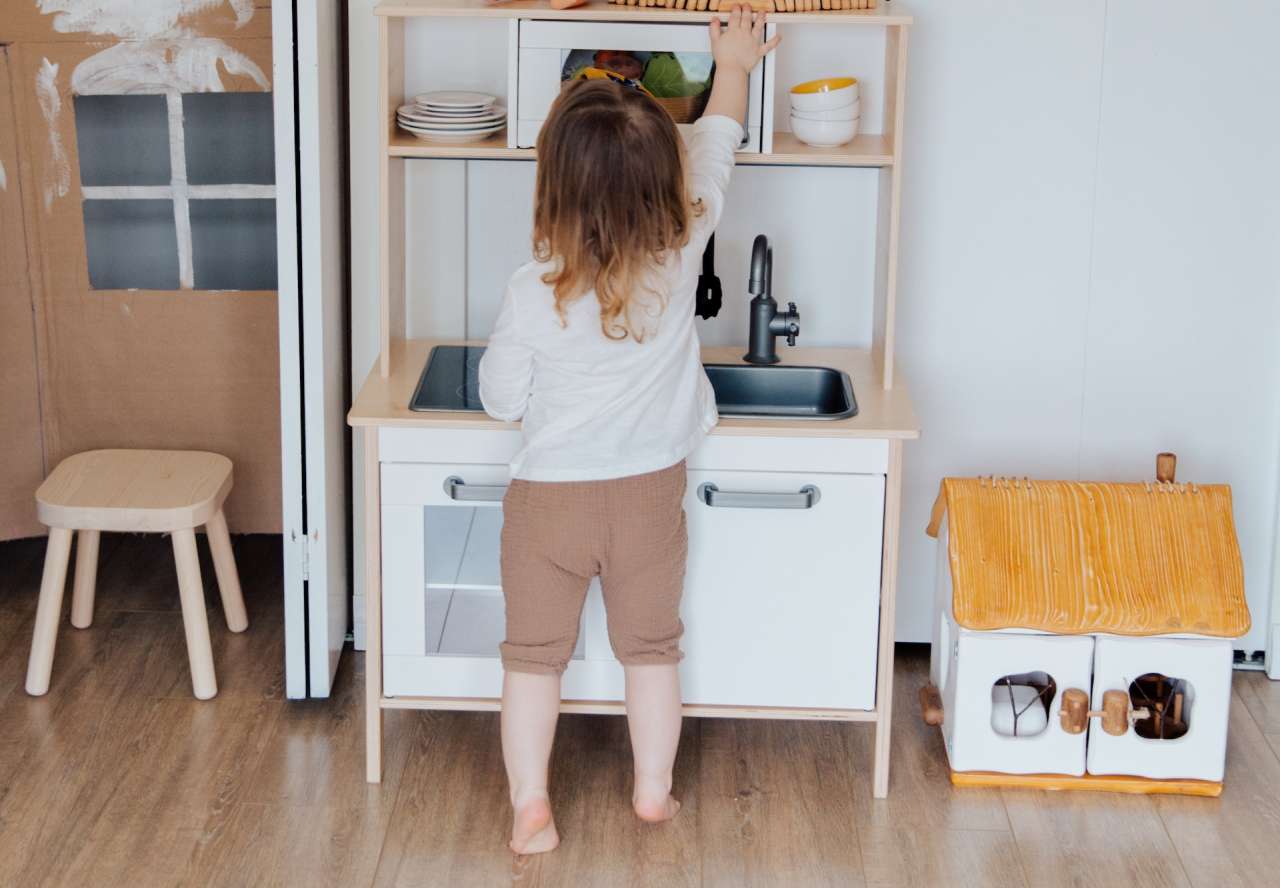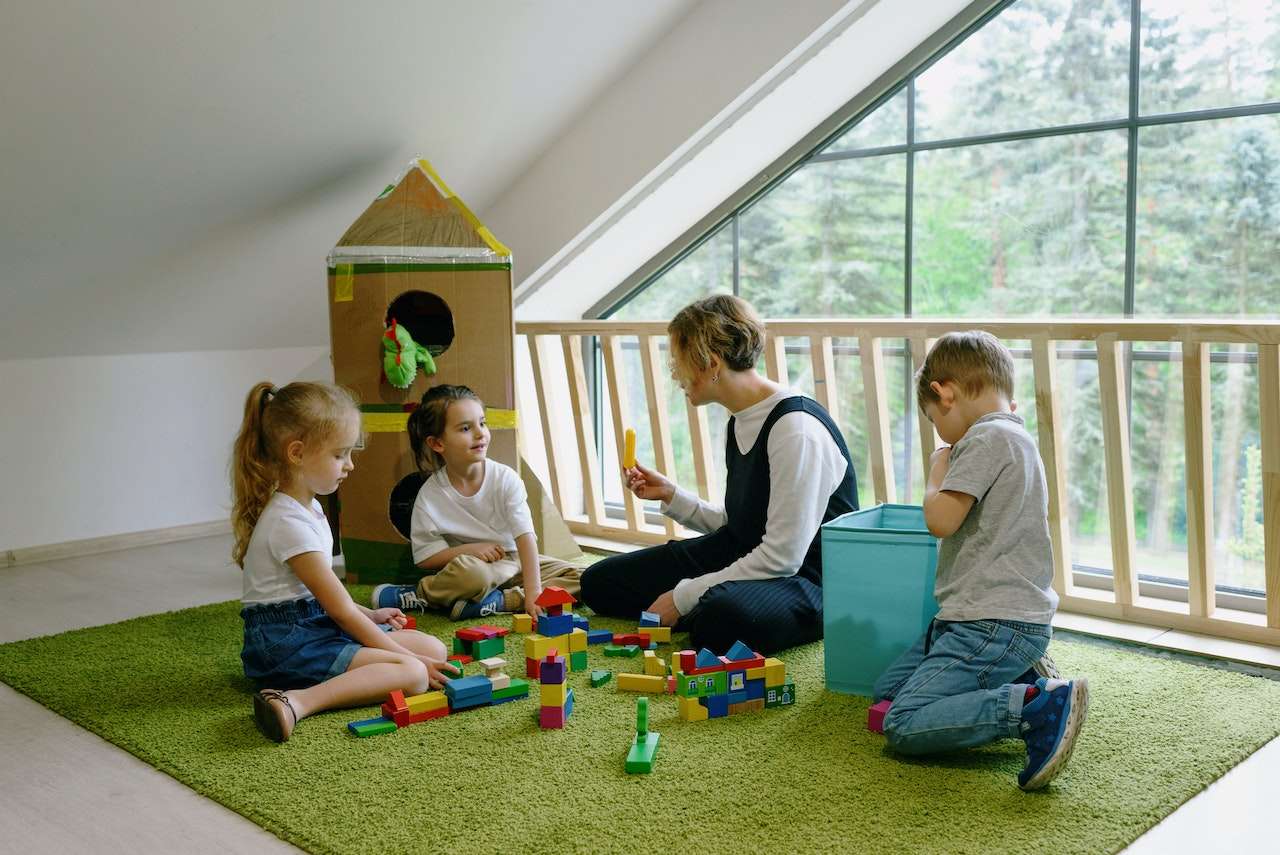The Montessori Method of education has gained immense popularity in recent years.
Its widely accepted philosophy of children learning through exploring the world around them has encouraged parents and schools to adopt Montessori education.
Children are encouraged to learn through play in this mode of learning. It becomes essential to choose their toys wisely so that they learn and grow even outside the classroom.
It is quite a challenge for parents to buy toys that can be age-appropriate, engaging, interesting, and safe for their children.
Maria Montessori, who created the Montessori, observed the children to understand their needs and interests from a scientific point of view. She designed materials to be used in the Montessori according to the age groups of children.
What are Montessori toys?
Montessori toys are considered Montessori materials that are open-ended and stimulate your child’s senses and imagination when they touch and hold them. They are based on the Montessori method of teaching.
Each toy works towards the growth of a particular sensory area of your child and allows them to explore while they play.
As they play with Montessori toys on their own, they develop a sense of independence and resilience.
With the pandemic situation, and children being at home most of the time, it becomes all the more essential for parents to invest in these toys.
Basic Features of Montessori Toys
1. They are made using natural materials
Most Montessori toys are made from natural materials like wood, metal, cotton, and rubber.
They connect the children to nature and help them to stimulate different sensory organs to experience temperature, weight, and texture.
They are also safe and sustainable. Toys made from natural materials are eco-friendly. They are durable. The children can play with them from early childhood.
Therefore, parents must prefer toys made of natural materials to plastic.
2. They are simple
Montessori toys are not flashy like other battery-operated toys. They do not have light, vibrations, or sound.
They are open-ended and enable children to explore and be creative. Examples are building blocks and pink towers.
3. They are realistic
These toys do not create a fake or fantasy world for children in the early stages. On the contrary, they connect to reality where children learn about things around them and how they work.
Their imagination develops naturally in the first six years of childhood. Unreal and fantasy characters or materials can confuse them.
4. They are open-ended
Let the children lead their play. They can explore the toys and come up with imaginative ideas.
Montessori toys are open-ended and provide endless possibilities for the children to imagine and engage.
You can sit back and observe what interests them and let the kids experiment and explore their creativity with the toys.
5. They focus on a specific goal
They are designed for the educational purpose of the child and focus on a specific area of development.
The toys are simple and help the child master one skill at a time. Too many features or complicated toys distract the child from focusing.
Based on the focus, the toys can be categorized as sensorial skills, gross motor skills, Language, Mathematics, Science, and arts and crafts.
Benefits of Montessori Toys
Montessori toys are incredibly beneficial for children irrespective of their age.
They can be implemented in their play as early as three months.
1) They help in the development of sensory areas of children
The pink tower, brown stairs, knobbed cylinders, and color tablets are the best examples of Montessori toys that encourage children to explore the world through their sensory organs.
2) The toys focus on one particular area and enhance understanding and concentration
The Montessori toys are multipurpose toys.
Children can climb the Pikler triangle. Infants crawl under it. Toddlers use it in creative ways to assemble tents and forts.
Animal figurines are played with by matching them with pictures and developing vocabulary.
3) They encourage independence in children
As the kids learn to play with the Montessori toys, they become independent in their learning and daily activities. It can boost their confidence in them.
Building blocks, constructive triangles, and fun dough are some of the Montessori toys which encourage kids to play independently with interest.
4) They help in the gross motor skill development
Toys that encourage fine motor development are a great addition to the toys collection. While playing and holding the Montessori toys, motor skills occur.
Woodpecker catching bug game is one such activity that develops hand-eye coordination in kids.
They pick up the worms and hide them in the tree using their thumbs and fingers in the process.
Building blocks, pegboard sets, bead stringing, and the Pikler triangle are other Montessori toys that enhance gross motor development in children by simply playing with them.
5) They promote problem-solving skills, Mathematics skills, and Science skills
By playing with the Montessori toys, the children constantly explore and experiment with the world around them.
They develop an understanding of concepts like Math and Science through play.
Counting boards are a toy that assists children of all ages in Mathematics and problem-solving skills. Simple to complex equations can be done.
Pegboard sets, multiplication boards, and Abacus are a few that help children in counting, sorting, and other Mathematics concepts.
Bead stringing and puzzles are excellent activities to learn patterns. Identifying patterns helps in learning math, reading, and writing.
Science kits are a great way to introduce science concepts to children at home. They can conduct basic science experiments with limited supervision.
6) The Montessori toys help children with language skills
Children learn about vocabulary and reading skills through these toys.
Phonetic reading blocks help in building a sense of confidence in children to read. They can use the blocks to form new words, match rhyming words, and learn the meanings of words.
7) The toys encourage art & crafts
Many toys and activities engage children as they draw and paint with colors.
Block crayons are great for children to play with color combinations.
8) Montessori toys are safe to play with
The toys are made from natural materials like wood, cotton, and metal that are safe for kids.
They contain no toxic materials, chemicals, or batteries.
Montessori toys like teether rings are for 3-6 months babies. As babies are used to putting things in their mouths, these toys come to your rescue.
Babies can chew or put them into their mouths without any worry. The toys stimulate their hands and mouth, keeping them entertained.
How to introduce Montessori toys to children?
Are you wondering what can motivate children to play with Montessori toys?
The way in which toys are organized in a playroom helps generate curiosity in children.
They take as much interest in toys as in the environment they play with the toys.
Even with few toys, an inviting environment can generate curiosity and interest in children.
According to research, a few toys at a time help develop deep concentration, independence, and long periods of creativity and focus in children.
Let us see how Montessori toys can be introduced to children, making them curious and encouraging play.
Give the kids their space
The children need space and time to explore and discover the toys in their ways rather than the rules imposed on them. If they lack interest in a toy, let them take their time.
Limit the distractions
If you have a TV in the same room as your children’s play area, consider removing it as it distracts them, and they lose their focus from play.
Avoid placing the electronic or fancy toys with the Montessori toys as they divert children. Children need to fully concentrate and focus on the wooden toys to explore them.
The play environment should not have too many toys. It may distract the children from mindful play.
Keep it clutter-free. Few toys encourage imaginative play.
Let children take the lead in their play
If the children seem lost or lack interest in a particular toy, encourage them and observe them play.
Do not interfere while they are playing. Let them explore and lead on their own.
Limit your expectations
Do not be anxious if your child switches playing from one toy to another. It is normal child behavior and is bound to improve over time. Let them play without any intrusion, do not praise them.
Every Montessori toy has a specific purpose. However, your child may find a new way to play with it. Let them explore the way they want.
Repeat and rotate toys
If the children do the activities or play with the toys repeatedly, they become skillful in their actions. Their hands and brain get prepared for complex activities at later stages.
If the children get bored or lack interest in particular toys, rotate the toys with some other toys.
After some time, reintroduce the same toys to them. They may enjoy playing with those toys after a break.


